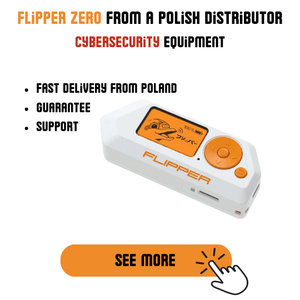
What is RFID card cloning. Safety guide
RFID controlled copying can be a great help for many people, but is it always possible? Is unwanted copying of RFID cards by dishonest people a real threat? What are the methods to prevent this? Well, it all depends on what type of tag you use and what level of protection you want to achieve to prevent unauthorized copying of RFID cards . Check out our security guide to also learn how manufacturers protect their products against cloning.
Can RFID be copied?
Yes, copying an RFID card is possible, but not in every case. The RFID system relies on the contactless exchange of data using radio waves, which makes the card convenient but sometimes vulnerable. RFID card copying is often called digital pickpocketing and involves capturing data and transferring it to a blank chip to create a cloning card. However, it is worth realizing that key rings, tags and cards of the simplest standard, operating at a frequency of 125 KHz, can be freely copied. For this reason, RFID card protection is of great importance . The issue is completely different in the case of the 13.56 MHz frequency, but more on that in a moment. Let's look at this simplest standard first.
125KHz
Well, in the case of the 125 KHz frequency, there are several aspects that make copying an RFID card not as complicated as it may seem. The first is the lack of encryption . Many RFID cards (often older ones with little memory) are not based on advanced encryption methods. This makes the data stored on them easily accessible to unauthorized persons. Copying RFID cards is also easier for other reasons. Well, low-frequency RFID readers are able to read data from tags from a distance of several centimeters . This makes it possible to intercept data without the owner's knowledge when the card is in his pocket, bag or backpack. The phenomenon of cloning is also intensified by the fact that there are many different devices on the market for copying RFID cards , thanks to which RFID cloning takes place. Not only are tools widely available, e.g. iCopy-XS RFID Cloning tool , but also e.g. smartphone applications that enable copying RFID cards , e.g. to Android . Professional RFID card duplicators designed, among others, for: for pentesters, locksmiths or building managers, they detect the frequency and type of tags and then read the content of the identifier. The copy of the source ID can then be written to a new, clean ID.
13.56MHz
However, in the case of devices that operate at a frequency of 13.56 MHz (e.g. Mifare standard), the matter is slightly more complicated and copying will not be easy. There are devices that can do this, but it requires appropriate knowledge of how to copy an RFID card , and the cloning process may still fail if the manufacturer uses additional security measures . For example, there are contactless tags or cards that contain an asymmetric secret key (which cannot be extracted from the card using the available communication interface). Many of these smart cards are built using Java Card technology. They contain a microcontroller and use special application software (written in Java). Most modern EMV-based credit cards use this type of mechanism to prevent cloning.
Copying an RFID card – how to protect yourself?
To protect yourself against undesirable data theft and copying an RFID card , e.g. to a dishonest person's phone , it is worth choosing products that use appropriate security measures. If you use 125 KHz tags, carry only the cards and tags you really need to minimize the risk of them being copied. It is also worth purchasing a special case or wallet with a protective cover that blocks radio signals. Such blockers contain a layer of metal that is a barrier to radio waves, so theoretically the RFID copier will not detect them. Remember, however, that a safe RFID system should have all components secured, as well as all communication channels between these components.
Also check in the SAPSAN store what RFID antennas can do .



